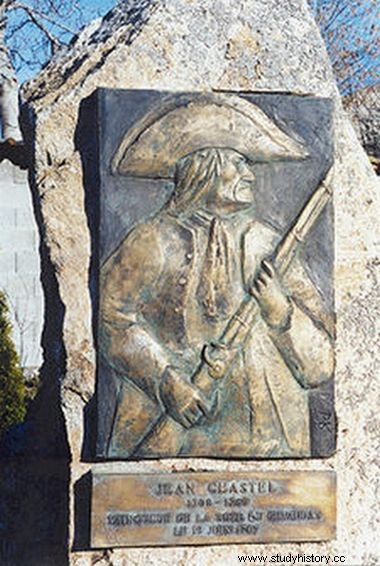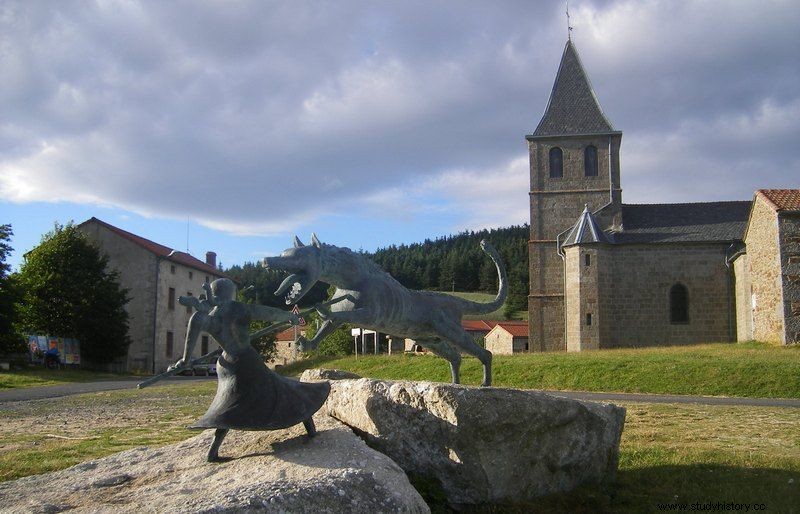The monster of Gevaudan murdered the villagers and haunted the queen's salons. Apparently, he also brought death bad luck to the only Polish woman on the French throne ...
Torn throats, gnawed entrails, claw marks - this is what the mysterious beast left behind, which began to terrorize the vicinity of the French Gevaudan in the summer of 1764.
The first victim was a young girl, then the monster attacked a group of children. It looked like the work of a wild animal or a few animals, but the newspapers and pamphlets began to mention an alleged divine punishment that affected the sinful French in the guise of a hellish beast.
Fear reigned in the region. Paris sent the army and François Antoine - King Louis XV's gunsmith and at the same time a great hunter. Many wolves were slaughtered, and the king's envoy shot the largest of them on September 21, 1765. It was this play that was suspected of attacks. Sheep bones and fragments of some red cloth were found in her intestines. Teeth, claws, muscles, a powerful tail - everything made the right impression. So the beast was stuffed and sent to Versailles as evidence that the problem has been successfully solved.

A French mansion watching a stuffed beast. Somehow, not everyone was terrified by the creature ... (source:public domain).
Less teeth than the tsarina
In the seat of the French rulers, this arch-wolf found its way to the anti-chambers of Queen Maria Leszczyńska - the Polish wife of Louis XV. In October, for a few days, the animal was presented to ambassadors and dignitaries who came to the salons. It was done with great pomp, hiding the creature from visitors under a large sheet and showing all its horror after the sheet had been thrown off. But British visitors, for example, were not impressed at all.
They complained that the infamous monster was just a big wolf, not much larger than an overgrown mastiff. Horace Walpole - son of the British Prime Minister and author of the first Gothic novel "The Castle of Otranto" - even laughed that the apocalyptic beast has six teeth less than Tsarina Catherine II , the nemesis of the Republic of Poland.
Queen Maria got the pet out of the hall. Especially since… the Gevaudan monster has gone mad again. There have been new attacks in the region! The beast from Leszczyńska's anti-marshmallow was probably just an accidental victim of the hunt. Or is her offspring gone mad?

Jean Chastel:the hero who beat the beast with a silver ball, or a criminal? Photo of the commemorative stella placed in the place where the Gévaudan monster was shot (photo:Χρήστης:Βήσσμα, license CC BY-SA 3.0).
The silver bullet ended the matter?
Another Gevaudan monster was ended by a man named Jean Chastel, shooting another archwolf on June 19, 1767. By then, the beast had recorded more than one hundred and fifty attacks and at least a hundred casualties.
The silver ball used by Chastel, sprinkled with holy water and bearing an engraved cross (as the legend says) was to testify to the supernatural character of the creature. Until today it is not known if it was about this wolf and the wolf in general. Some believed that other animals, such as a hyena or an Afghan Hound, were attacking humans.
There was also mention, of course, of a werewolf. Or at least about a madman who disguises himself as a werewolf and wants to scare sinners in times of declining morals. Maybe even Jean Chastel himself was that geek, who knows?

The beast during the fight with Marie-Jeanne Valet. Monument by Philippe Kaeppelin standing by the church in Auvers (photo:Szeder László, GFDL license).
The spice of the supernatural threads of the Gevaudan beast is added by the fact that right after the stay of the stuffed creature in Maria Leszczyńska's anti-chambers, the life of the Polish woman turned into a series of tragedies. On December 20, 1765, her son and heir to the throne, the deceased Louis Ferdinand Bourbon, died suddenly.
In February 1766, her father, Stanisław Leszczyński, the former king of Poland, died badly and died. And on June 24, 1768, a year after Chastel's hunt, Maria herself died in Versailles. A coincidence or… another curse on a dynasty in French history?
